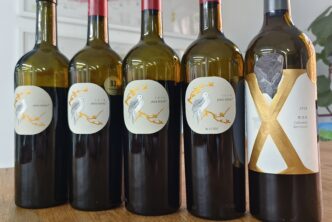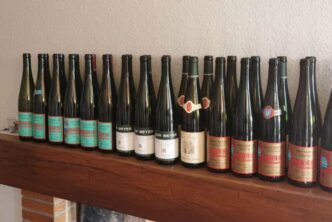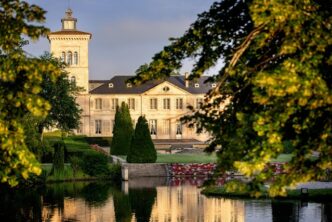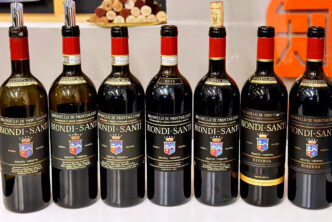Chateau La Tour Blanche (the circumflex accent on the first “a” of the word château no longer appears on the winery’s newer labels, while it was present on the labels of the older vintages, such as for example in the 1970s) is one of the most important and best-known wines of Sauternes. It is, without doubt, one of the top five-six wines of Sauternes and one of the world’s truly great sweet wines. In fact, most people are not aware that Chateau La Tour Blanche was once viewed as the best Sauternes wine of all right after Château d’Yquem (the latter estate does use the accent on the first “a” of château). Though it is not often addressed, the well-known 1855 Classification of Bordeaux’s wines, drawn up by the Syndicat des Courtiers des Vins en Bordeaux (under the watchful eye of the city’s chamber of commerce) on the express request of Emperor Napoleon III (who wished for Bordeaux’s best wines to be showcased at the Exposition Universally to be held in Paris), did not list the wines haphazardly or in alphabetical order. Rather, the order in which the wines were placed in the classement followed a scale of quality (and this for both the red and the sweet white wines: it is not by chance that Mouton-Rothschild was initially placed first among the second crus): in this respect, it is important to know that Chateau La Tour Blanche was listed in the first spot among the Premier Crus of Sauternes (the “premier of the premiers”, if you will), second only to d’Yquem (which is the only Bordeaux, white or red, to have been qualified as a Premier Grand Cru Supérieur). It follows that Chateau La Tour Blanche has been held in extremely high esteem since a very long time. And given the quality of its wines, both past and present, we probably should too.
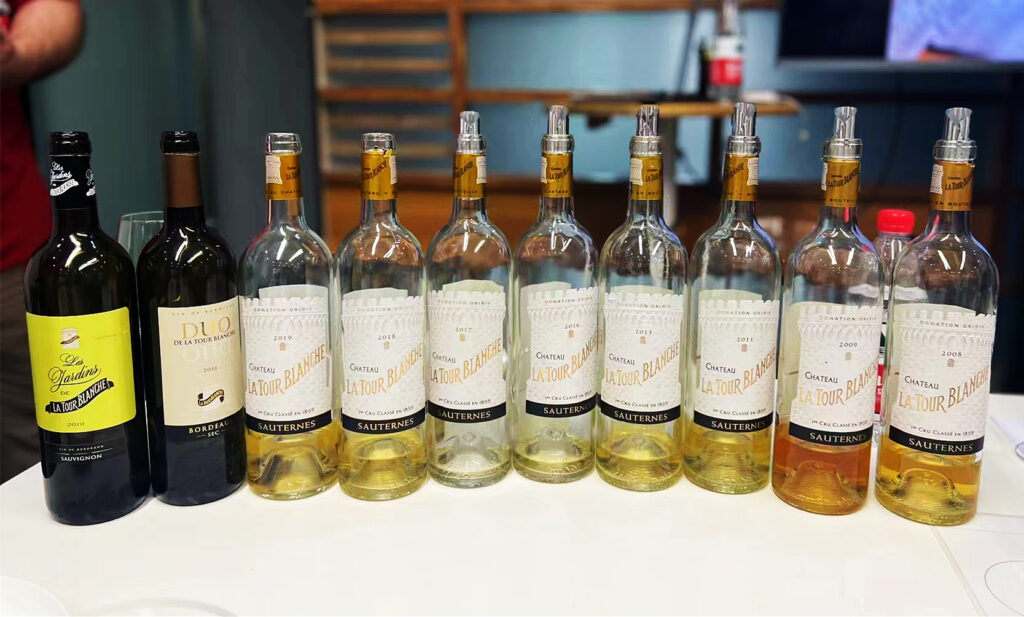
A little bit of history
Not surprisingly for a wine from Bordeaux, the history of La Tour Blanche goes back many, many centuries. But for simplicity’s sake, it is generally taken to start in the seventeenth century with the arrival on the scene of Jean de Saint-Marc, one of the many important individuals (he was treasurer to King Louis XVI) who contributed to the property’s fame throughout the centuries). It was he who was the one to give the estate its present-day name. No, the name of the Chateau does not derive from a white tower (tour blanche, in French) that stands there. Rather, the name of the winery stems from Jean de Saint-Marc being the Sieur de La Tour Blanche (Lord of the Tour Blanche); he added his name to the property’s as was the custom of the times. He also invested heavily in upgrading the estate, turning what used to be a more modest chartreuse (or country house typical of France’s Southwest) into the beautiful château that we know of today. And among his building endeavours, he did have a white tower built, so as to make the estate’s name more pertinent (for a while, the tower was a pigionnier, a very common construction of the time). Another owner of La Tour Blanche, Frederic Focke, did much to promote the need to late harvest in the area, a winemaking technique that was already in use in Sauternes but apparently not as widespread as it was to become later in time, or as it is today. (Focke was of German descent and was well-aware of how important late harvesting was to the success of his original country’s Riesling wines.) The third important figure in the history of La Tour Blanche was Daniel Iffla, who went by the pseudonym of Osiris. An exceptionally wealthy man who loved the finest wines, he spent a good deal of his time in Arcachon but never failed to live at La Tour Blanche during harvest. As he had no heirs, he specified in his will that upon his death Chateau La Tour Blanche would be donated to the French state upon the government meeting the testamentary provision that a viticulture and oenology school would be built on the château’s grounds. Iffla passed away in 1907; in 1909 the French government accepted the stipulation and the school was officially opened once construction was completed in 1911. (In this respect, note that all the bottles of Chateau La Tour Blanche Sauternes carry the words “Donation Osiris” at the bottom of the front label.) Today, the estate belongs to the French region of Nouvelle-Aquitaine, who has been its owner since 2010. The school and winery run separately but are under the control of the same government entity. The school has had many noteworthy, even famous graduates over the years, including for example the world-famous winemaker Michel Rolland.
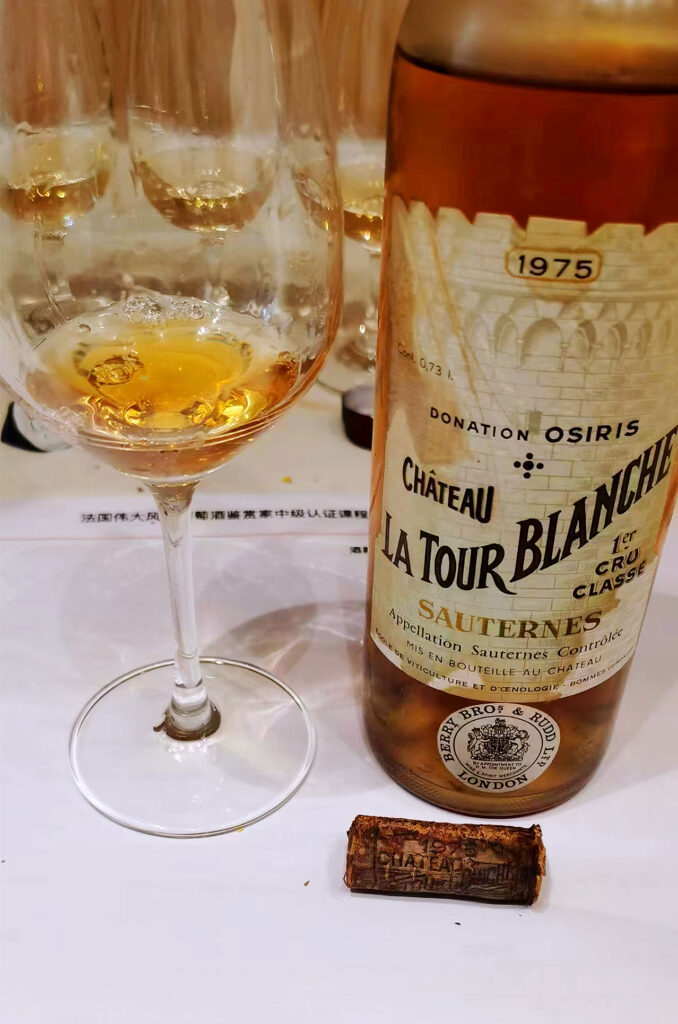
Chateau La Tour Blanche: grape varieties and the unique terroir of Bommes
Chateau La Tour Blanche boasts 44 hectares most of which are under vine, planted to roughly 83% Semillon, 12% Sauvignon Blanc and 5% Muscadelle (beware that you will read of varying percentages on various websites and written reports, such as 83% Semillon, 15% Sauvignon Blanc and 2% Muscadelle). No matter: what is interesting and noteworthy about Chateau La Tour Blanche is that this is one Sauternes property that boasts large plantings of Muscadelle, nowadays a very rare variety in the Sauternais but that has very strongly marked many vintages of this Sauternes in particular (witness the very excellent and very underrated 2013 and 2016 Chateau La Tour Blanche wines). The estate also grows a few hectares of Merlot, and is one of the rare Sauternes estates that also makes and sells a Rosé and a red wine (see below).
Chateau La Tour Blanche is located in Bommes, one of the five communes that are part of the Sauternes Appellation along with the towns of Barsac, Preignac, Fargues and Sauternes itself. Of these communes, only the wines of Barsac have the right and option to be called Barsac instead of Sauternes (something that a select few Barsac estates choose to do, while others prefer to use the better-known and more easily recognized Sauternes monicker). But there is a well-grounded reason for this exception, one that actually applies to the other communes of the Sauternais as well. Whereas most everybody tends to think of the Sauternes area as one and the same, nothing could be further from the truth: Barsac, for example, is a lower-lying area with soils that are siltier and sandier than those of Sauternes, making for lighter, more refined wines that are very clearly distinguishable, even when tasting blind, from the richer wines of Sauternes. The same caveats apply to the other communes of the Sauternais, not just to Barsac: with a little experience, the wines of Preignac are recognizably different from those of the other communes, for example. It is so too with the wines of Bommes: more or less minimal soil differences between the communes aside (that are nonetheless present), it Bommes is an area characterized by a special topography and hence very different wind currents than the rest of the Sauternais. This has very meaningful consequences on the formation of frost and noble rot, as has been observed in many vintages, such as for example 2017. In that vintage, while most of Barsac’s grapes were wiped out by horrific frost episodes, Bommes enjoyed (for the most part) bumper crops. In a wine production area as unique as that of Sauternes, another important aspect is the altitude at which the vineyards lie: in this respect, La Tour Blanche lies at one of the higher spots of the Sauternes Appellation, at roughly 67 meters above sea level. It is also very close to the Ciron stream, the cool waters of which mixing with those of the Garonne help create copious amounts of noble rot in many vintages (other necessary conditions for the development of noble rot permitting). The soil at La Tour Blanche is mostly gravel over clay-limestone. In short, the property as a truly blessed terroir when it comes to potentially making outstanding Sauternes wines.
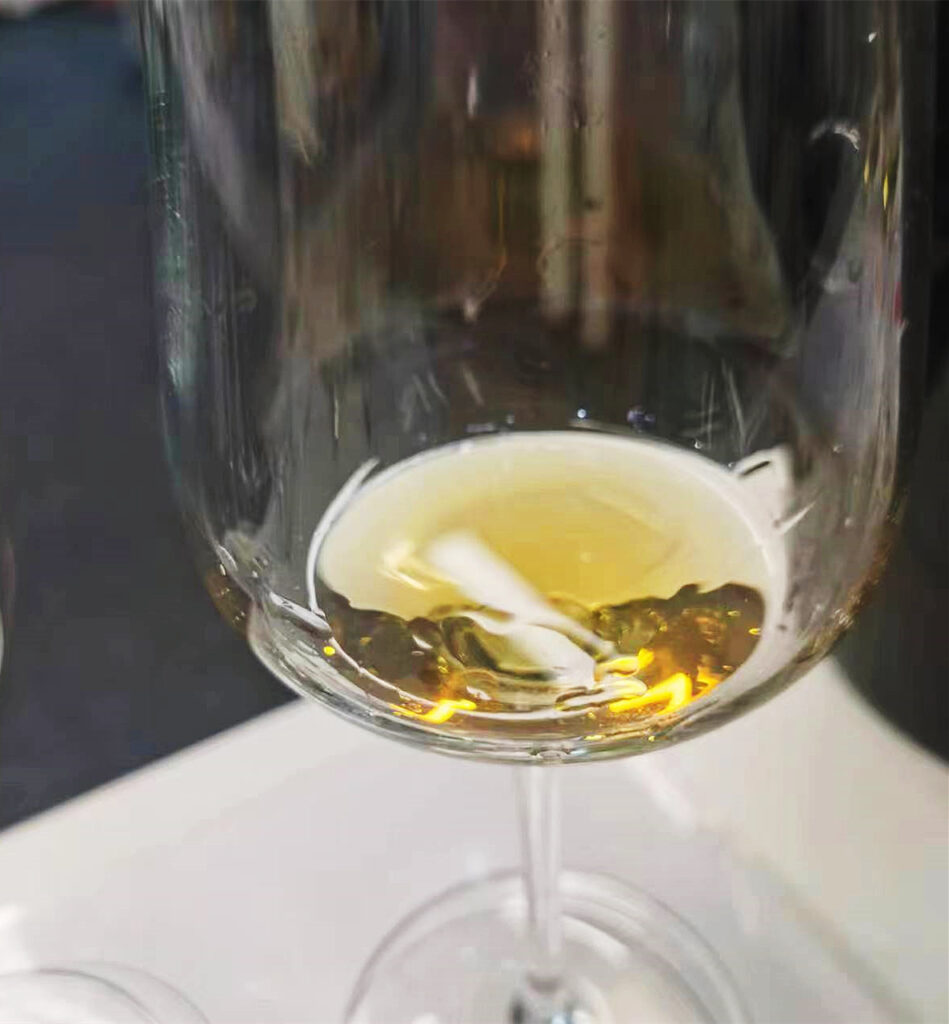
The wines
Physical parameters of terroir aside, at La Tour Blanche they are also lucky to have a very talented and forward-thinking technical staff. While La Tour Blanche’s wines have always been immediately recognizable for a generally richer, thicker, sweeter style in most vintages, this truism may in fact no longer apply, as at least to my mind, La Tour Blanche wines after 1990 have been less marked by a “full throttle” approach and are not as mouth-coatingly rich and thick as they once were. Part of this is due to the larger than usual presence of Muscadelle in the final blend of many vintages, a good idea that rather than making the wines more dilute helps make them more drinkable and refined. Since the 2011 vintage, I find there has been a noteworthy uptick in purity and approachability to La Tour Blanche’s wines that I welcome wholeheartedly.
The estate also makes a second Sauternes wine, the Le Charmilles de La Tour Blanche and even a third Sauternes wine, called the Brumes de La Tour Blanche. These two other Sauternes (especially the Brumes) are much lighter in style and very approachable for those who prefer off-dry, lighter styled wines. But the winery also makes two splendid classically dry white wines, the Les Jardins de La Tour Blanche (100% Sauvignon Blanc) and the Duo de La Tour Blanche (usually a 65% Semillon and 35% Sauvignon Blanc wine, but Muscadelle can find its way in here too, given that the objective with this wine was to highlight the potential of all three of the classic grapes of the Sauternais). Note that these two dry wines are Vins de Bordeaux or Bordeaux Blancs, and not Sauternes as is instead often mistakenly reported on websites and magazine articles everywhere (the Sauternes Appellation’s name, at least for now, can be used only for the zone’s famous sweet wines). Last but not least, the winery makes, as mentioned before, also a pink and a red wine from 100% Merlot, both of which are meant to be enjoyed early on in their lives (many of the wines once had different names, such as Jardins de Thinoy and Cru du Cinquet, in case you should come across older vintages). The wines are generally aged in either stainless steel or a mix of stainless steel and oak barrels, but such regimens are also applied differently based on the grape variety used: for example, while Sauvignon Blanc gets treated preferentially with stainless steel, the Semillon tends to be matured in oak.
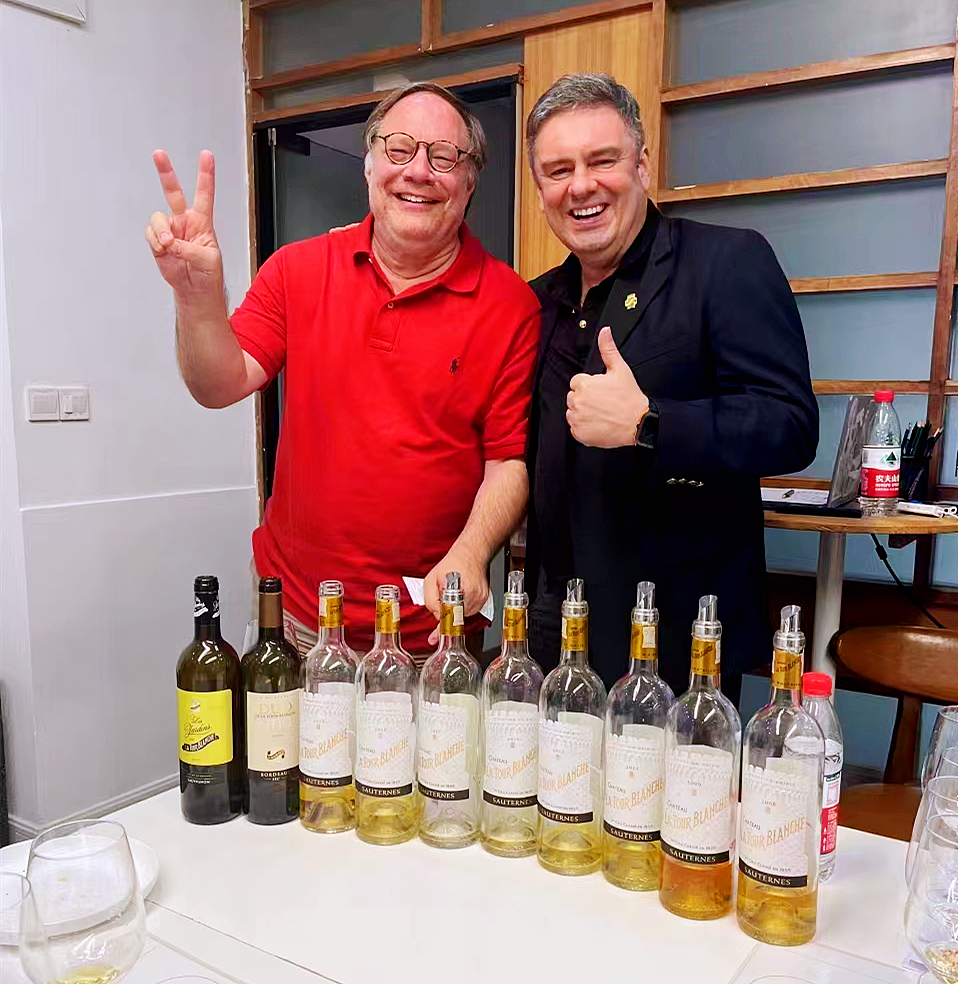
The wines in this tasting
All the wines in this report were tasted in Shanghai in September 2023, save for the 2001, 1990, 1988 and 1975, sourced from my own personal cellar to make this tasting report more complete (wines bought in France upon release save for the 1975 bought in 1988 in Italy thanks to a wine merchant with a reputably good cold cellar). My thanks to the estate and Bert Van Dessel, the estate’s brand ambassador in Asia for making all the other vintages reported on in the tasting, with bottles sourced directly from the estate, available.
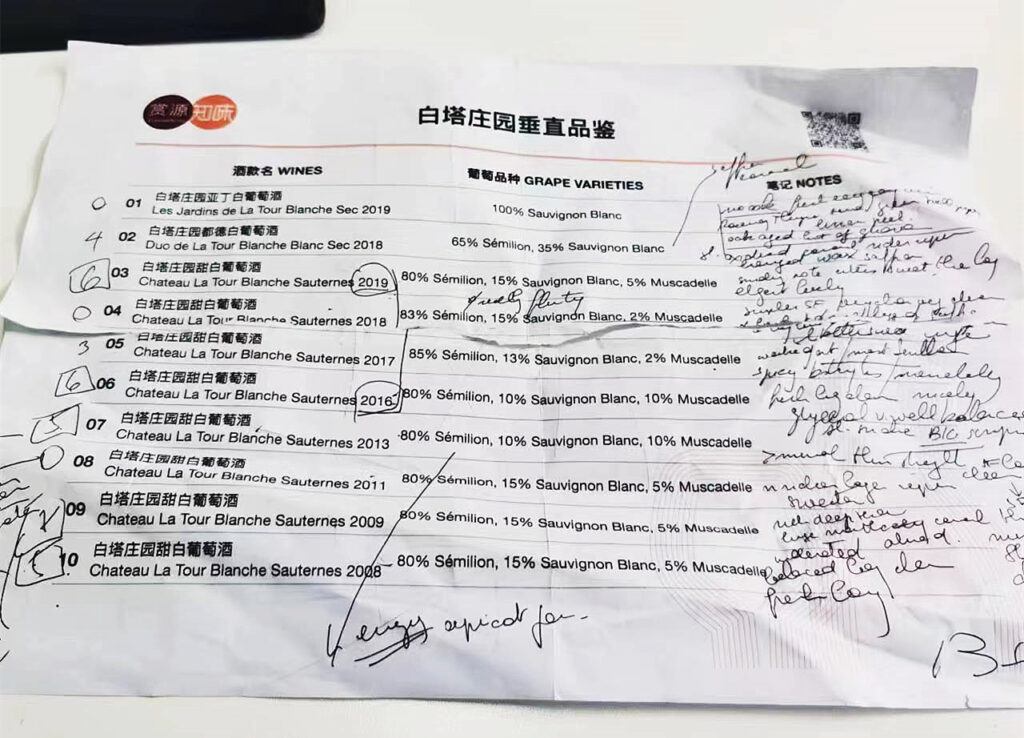
Chateau La Tour Blanche 2019 Les Jardins de La Tour Blanche Sec Bordeaux 90
Bright pale straw yellow. Archetypal Sauvignon Blanc aromas and flavours of green fig, gooseberry and kiwi, with bright lemony lift. Easygoing and fresh on the long close, but not at all unbearably green as far too many boring and to my palate fairly undrinkable world Sauvignon wines tend to be nowadays (mostly because the grapes are picked unripe in the name of freshness). This 100% Sauvignon Blanc wine is instead a beauty, with good juicy ripe fruit and very lively. Won’t make old bones, so drink up soon and enjoy. Drinking window: 2023-2025.
Chateau La Tour Blanche 2018 Sauvignon Duo de La Tour Blanche Sec Vin de Bordeaux 91
Luminous golden-tinged straw colour. Deep aromas of ripe citrus fruit, peach and a hint of beeswax speak of Semillon, with plenty of fresh lemony lift provided by the Sauvignon. Light on its feet but texturally interesting, the aftertaste is long, clean and flavourful. This is a real step up in concentration from Les Jardins, and will be able to stand up even to light white meat dishes. The Semillon here adds a complexity and size to the finished wine that would be completely missing if this was made with Sauvignon Blanc only. A blend of 65% Semillon, 35% Sauvignon Blanc. Drinking window: 2023-2027.
Chateau La Tour Blanche 2019 Sauternes 96
Now this is a gem. The 2019 Chateau La Tour Blanche is one of the best Sauternes of the vintage, offering a magical sugar/acid balance and deep aromas and flavours of tropical and ripe citrus fruit, saffron, honey and beeswax, complicated by notes of lemony botrytis. The clean, precise, rising finish is at once smooth yet penetrating and lasts for minutes. This beauty boasts sneaky concentration and complexity but is remarkably light on its feet and seems much less sweet than it really is. A great vintage for this estate, in a year that was marred by the presence of grey rot and fruit flies (and a hot dry summer with rain in late September and October), this is a gorgeous Sauternes that will match heavenly with raw shrimp, light pumpkin soups and pumpkin ravioli and chicken or veal filets with mushroom sauces. A blend of 80% Semillon, 15% Sauvignon Blanc and 5% Muscadelle. Drinking window: 2023-2050.
Chateau La Tour Blanche 2018 Sauternes 89
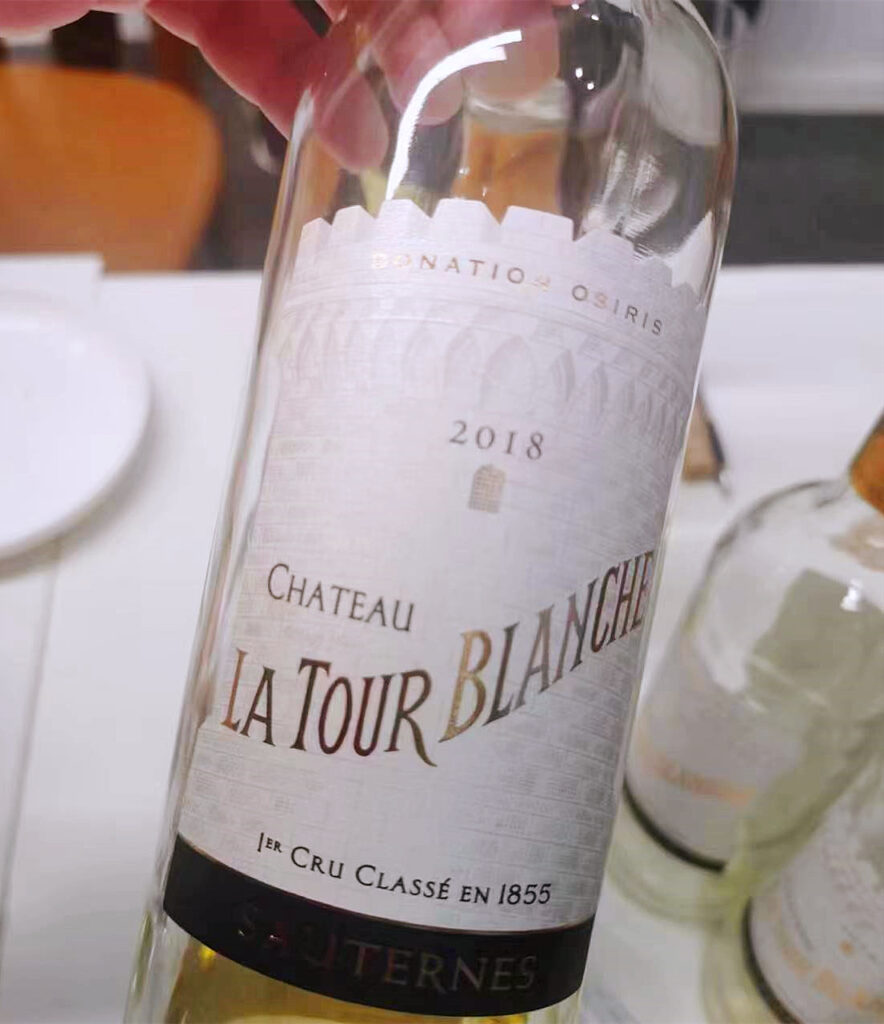
Medium straw-green with some gold. Discreet, even subdued aromas and flavours of orchard fruit, herbs and flint, but not much depth or complexity. The aftertaste hints at saffron and peach. By no means a bad wine, but this is probably the only disappointing wine in this tasting. I’m afraid there wasn’t getting around much the difficulties posed by the 2018 vintage (characterized by a much too hot summer, meaning there wasn’t much noble rot, plus episodes of hail and plenty of downy mildew). A blend of 83% Semillon, 15% Sauvignon Blanc and 2% Muscadelle that will age well but that won’t ever deliver a great Sauternes drinking experience. Drinking window: 2023-2033.
Chateau La Tour Blanche 2017 Sauternes 94
A real work of art, the 2017 Chateau La Tour Blanche showcases an archetypically rich Sauternes in a glorious vintage. Medium deep golden yellow. Intense spicy botrytis complements opulent, showy peach, tangerine, mango, orange blossom, honey, crystallized ginger and saffron on the complex, multilayered nose. Then also multilayered and opulent in the mouth, with a suave rich texture and just enough acidity to carry and extend the flavours on the long rich finish without the wine ever becoming tiring or cloying. So good you can drink this already now, but it will prove even more complex if you let it rest another five to six years in your cellar. The 2017 vintage was characterized by late April frosts, uneven flowering, and noble rot developing late in the year (something that tells you a little about the wines, provided you have an idea of wien the estate picked its grapes). A blend of 85% Semillon, 13% Sauvignon Blanc and 2% Muscadelle. Drinking window: 2023-2042.
Chateau La Tour Blanche 2016 Sauternes 95
One of the most underrated Sauternes vintages ever, the exact merits of the 2016 La Tour Blanche have gone unrecognized, and unfairly so; but mark my words, this is an exceptionally elegant, sneakily concentrated Sauternes that will appeal to those who prefer these wines in a less rich and mouthcoating style. Pale lemon-gold colour. Extremely refined, mineral-driven aromas of mango, guava and passion fruit complemented by hints of acacia flower honey, nutmeg, jasmine and ginger. Utterly seamless in the mouth, and boasting impeccable balance, this is long and pure, rich and pleasantly oily, featuring nicely lingering flavours of orchard and tropical fruit with hints of beeswax and nutmeg. A blend of 80% Semillon, 10% Sauvignon Blanc and 10% Muscadelle that showcases just how well that high a percentage of Muscadelle, which is generally unheard of, can contribute to the making of magnificent Sauternes. Noble rot developed late in 2016, so those estates that picked too early made wines from mostly raisined grapes losing out on the added complexity that noble rot brings. Trust me, this beauty is in no way a lighter-styled Sauternes. Drinking window: 2023-2040.
Chateau La Tour Blanche 2013 Sauternes 94
Bright golden-tinged yellow. Aromas and flavours of minerals, herbs, lime, jasmine and lemon verbena are lifted by hints of spicy botrytis. Long and layered in the mouth but less opulent than the 2016 and other La Tour Blanche wines, but very well balanced and pure. This is another La Tour Blanche marked by an inordinately high percentage of Muscadelle (the 2013 is a blend of 80% Semillon, 10% Sauvignon Blanc and 10% Muscadelle), and far from being dilute or simple, it’s an exceptionally fine, highly satisfying wine. The lively, harmonious acidity leaves you with an impression of welcome steeliness. This and the 2016 are two of the most underrated La Tour Blanche wines ever. Readers should avoid making the mistake of thinking that 2013 was poor year for Bordeaux: it was, but for the region’s red wines, not so for the Sauternes that have mostly turned out very well indeed. Drinking window: 2023-2038.
Chateau La Tour Blanche 2011 Sauternes 92
A throwback to the older style of La Tour Blanche, this is a much richer, sweeter and broader wine than any to have followed since then. Deep vivid golden straw yellow colour. Deep, thick, composite aromas of crystallized mango, saffron reduction, peach jelly, orange nectar and caramel. Then rich, ripe and lusciously mouthcoating, with very nice delineation to the ripe rich flavours of tropical fruit, sweet spices and musk. Not the most nuanced La Tour Blanche ever made, but rather light on its feet for such a big wine, the aftertaste is only medium-long but will leave you not wanting to let go of your glass until its emptied. It’s a gorgeous wine and one that sweet wine lovers, and lovers of Sauternes in general, can’t help but fall in love with, but those who prefer nuanced wines will like the other vintages of La Tour Blanche described in this tasting report more. A blend of 80% Semillon, 15% Sauvignon Blanc and 5% Muscadelle. Drinking window: 2023-2035.
Chateau La Tour Blanche 2009 Sauternes 97
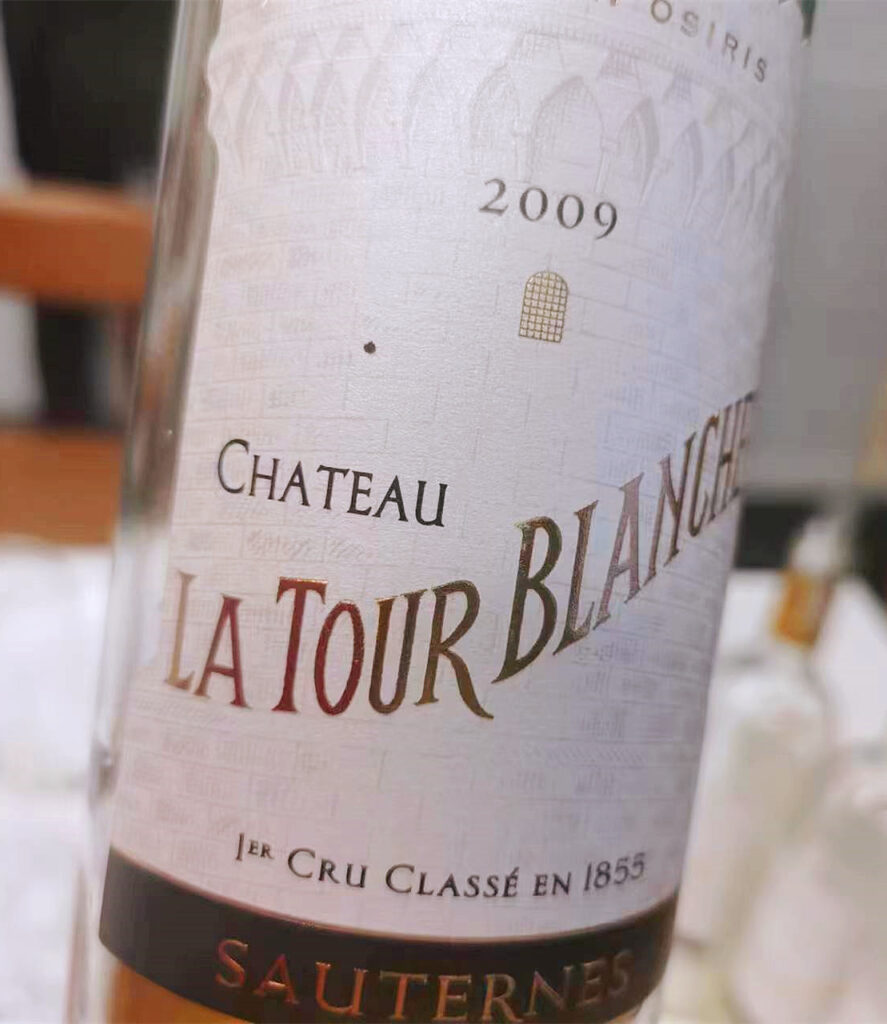
An amazing wine ever since it was first presented at the Primeurs, the 2009 Chateau La Tour Blanche is a La Tour Blanche I know extremely well having tasted it not just back then but countless other times over the years. It has never been short of exceptional, and it still is so today. A very big, sweet and luscious wine (as it ought to be, given the characteristics of the 2009 vintage’s wines and of La Tour Blanche back then) it separates itself from all other similarly big Sauternes because of an amazing amount of lift and precision.
Deep vibrant yellow gold colour. Captivating aromas and flavours of almond paste, custard cream, tropical fruit nectar, glazed pineapple, crystallized apricot and ginger are extremely well delineated, pure and long. Copious amounts of marmelady botrytis add a whole other level of complexity here that is simply not found in any other wine made at La Tour Blanche since the late 1980s. Closes very long with a whiplash of welcome harmonious acidity that helps make this even more enticing than it already is. A blend of 80% Semillon, 15% Sauvignon Blanc and 5% Muscadelle. Drinking window: 2023-2035.
Chateau La Tour Blanche 2008 Sauternes 94
Pale golden-tinged yellow. Nectarine, white peach tea, sweet spices and oak-related scents of vanilla and nuts on the very refined deep nose. Rather silky in texture, with a glyceral softness and a hint of banana complementing the nicely cut and clear flavours of lemon verbena, ginger and pear. Boasts noteworthy sugar/acid balance with an attractive plumpness rising slowly on the long, elegant back end. This reminded me of what an ideal crossing of the La Tour Blanche 2009 and 2016 would taste like. Make no mistake about it, this is heavily underrated Sauternes that is drinking beautifully now and that will pair very well with even complex white meat dishes like roast fowl with mushrooms, or try it with Thanksgiving turkey and yams. A blend of 80% Semillon, 15% Sauvignon Blanc and 5% Muscadelle. Springtime frost, plus bouts of downy mildew greatly reduced the 2008 crop, but what grapes were left made excellent Sauternes, as the 2008 La Tur Blanche clearly shows. Drinking window: 2023-2040.
Chateau La Tour Blanche 2001 Sauternes 95
Deep yellow-gold. Knockout nose offers orchard fruits, glazed pineapple, papaya, marzipan and nutmeg. Very rich, ripe and oily, with a glyceral texture and sweetness that leave an impression of girth behind. But the wine is evolving beautifully, now showing greater grace and refinement than when it was first released, with delicious nuances of white chocolate and toffee building on the caramelized-apricot core of flavours, nicely framed and lifted by smoky botrytis that further accentuates the fruit. Wonderfully concentrated wine with a very long, sweet, palate-staining finish. Drinking window: 2023-2035.
Chateau La Tour Blanche 1990 Sauternes 94
Full yellow-gold. Orange peel, peach nectar and spicy oak on the nose, with obvious undertones of marzipan and toffee. Sweet, suave and very glyceral, with seamless, complex flavours of ginger tea, grilled yellow peach, lime, coconut and crystallized mango. Still wonderfully fat and sweet after all these years (the 1990 was always a richer-styled La Tour Blanche) but with a lively core of minerally fruit that actually helps this come across as less full-bodied and rich than the 1988 (usually, with most Sauternes, it’s the other way around). Fully evolved and currently offering a rich drinking experience, I wouldn’t hold on to this much longer. Drinking window: 2023-2030.
Chateau La Tour Blanche 1988 Sauternes 94
Medium yellow-gold. Deeply pitched aromas of honey, orange and dried apricot are complicated by lemony botrytis and by suggestions of spicy oak. Rich, sweet and wonderfully pure, with a nectar-like quality to its extremely flavourful decadently ripe peach, orange marmalade, nutmeg and cinnamon nuances. This boasts an exhilarating chewy texture and superb aromatic persistence and finishes long with plenty of repeating botrytis character. Drinking window: 2023-2033.
Chateau La Tour Blanche 1975 Sauternes 93
Vibrant burnished golden-yellow colour. Spicy, linear aromas of pineapple, nutmeg and ginger, with a complicating smoky botrytis and a caramelly nuance. Then not overly concentrated but nicely detailed pineapple, apricot and candied citrus flavours have a penetrating quality and surprising juiciness for a wine this old. Almost painfully spicy, leaving a somewhat aggressive character on the long, complex, smoky finish. But even after almost fifty years, this is still light on its feet and youthful. Drinking window: 2023-2028.
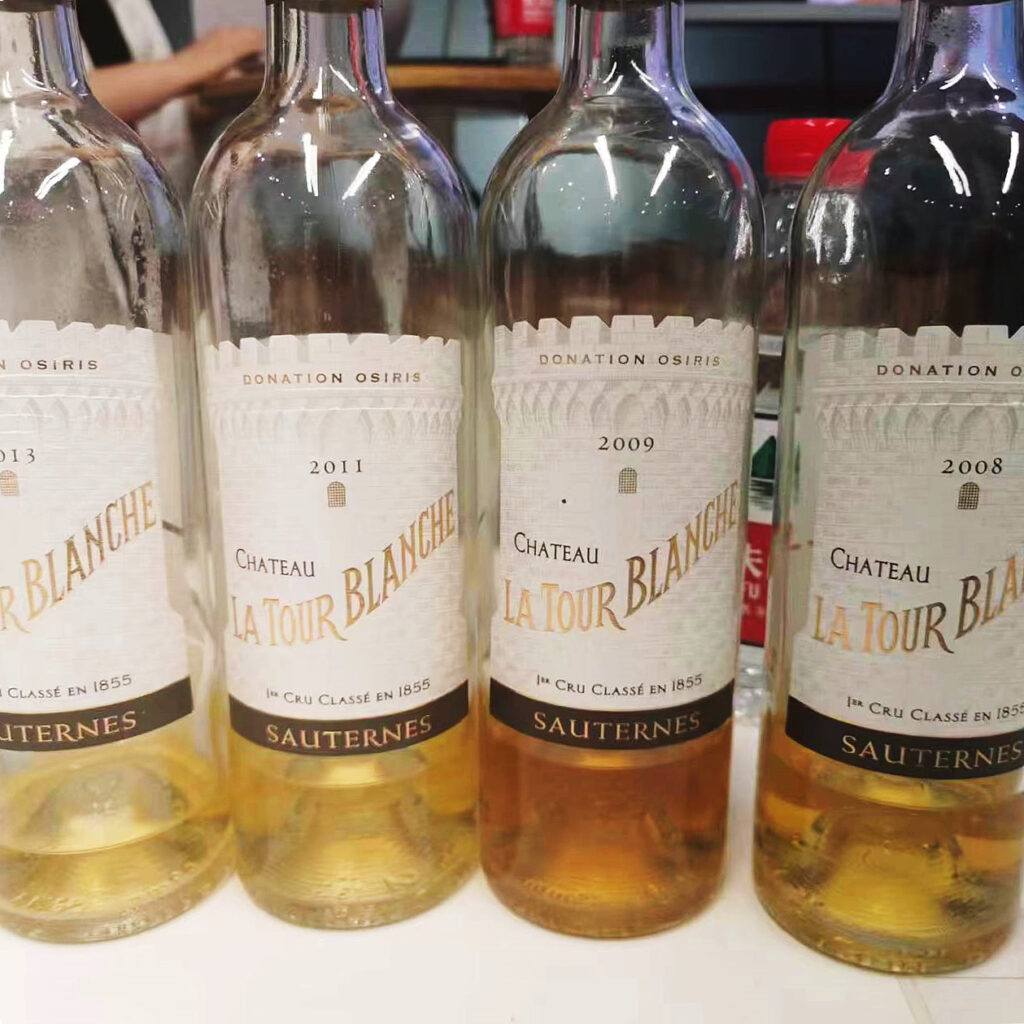

 中文
中文
